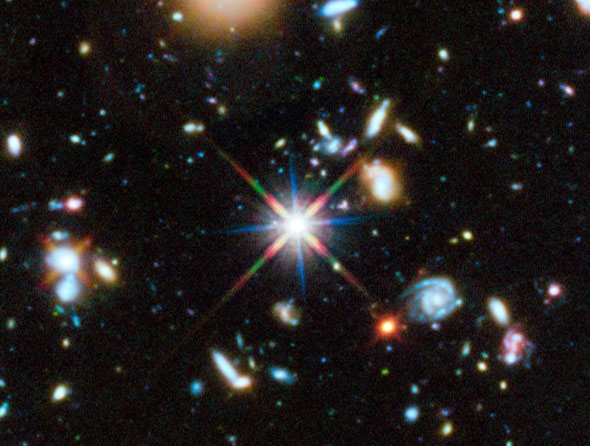Create a free profile to get unlimited access to exclusive videos, sweepstakes, and more!
Twinkle, Twinkle Little Star

I’ve gone something like 10 years without thinking of the song “Twinkle, Twinkle, Little Star” … and then it shows up in my life no less than three times in a couple of months. And here’s the weird part: All three of these things are really cool, and one is a correction to something I said that’s wrong.
Prepare to be scintillated:
1) I already mentioned this in an earlier blog post, so let’s get it out of the way: My very talented and funny friends Henry Reich and Zach Weinersmith created a scientifically accurate version of the song for kids and made it into a book and video.
It’s great. Go buy it.
2) In my first book, Bad Astronomy, I have a chapter about why stars appear to twinkle. I introduce the chapter with the first line of the song, crediting the music to Wolfgang Mozart.
Well, it turns out, that’s not true. It’s just one of those legends that gets passed around, eventually becoming self-sustaining (when you look it up online, you get lots of authoritative sites saying it’s true, so it perpetuates). I found this out from no less a light than Ken Jennings, 80-billion-times-Jeopardy! Winner (and, incidentally, host of the weekly Slate news quiz). He has a bit more of the history of the song, too.
I did my research before crediting it to Mozart (and I wrote the book when the Internet was very young, just a handful of electrons in a jar), but I must have found a source that simply repeated the claim. There’s probably some kind of lesson in here.
3) While this isn’t 100 percent technically about stars twinkling, it’s close enough that I will list it here: Once again from my friend Henry Reich, here’s a Minute Physics video about why we think of stars as being, well, star-shaped (that is, with little points instead of being dimensionless dots).
I suspect this idea of tiny imperfections in the lenses in our eyes is only part of the answer, though. I don’t actually see stars as having points, but my vision isn’t perfect (I’m a hair near sighted). But small bright lights do sometimes take on a pointed shape when I see them through scratched windows. This may contribute to the idea.
As an aside, though I imagine the idea of a five-pointed star goes back long before photography, we do see stars having points in a lot of modern photographs, like with Hubble. That’s because many telescopes have two mirrors, with the second one supported by metal strips. Light bends around the strips, creating “diffraction spikes” in many images. I’m not saying that’s why we think of stars as star-shaped, but it’s an interesting thing to know about. And we all need more interesting things in our lives.
Bonus! 4) Finally, after all that, maybe you're wondering just why stars twinkle. Well, maybe this'll help.














